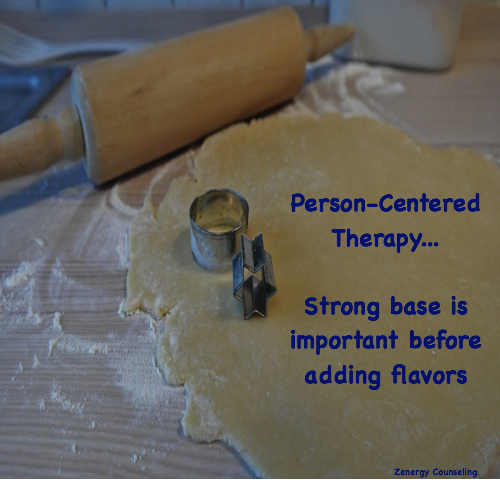If you told me when I started learning more about therapy that one day Carl Rogers’ style would become part of my core beliefs- I probably would not have said anything nice to you. In fact, my very first exposure to watching his style actually made me angry. What I can tell you now is that with growth comes maturity; my experiences have taught me that regardless of the techniques or styles of therapy I utilize, the core belief of Person-Centered Therapy is essential in almost every style of therapy out there.
The first conversation I had regarding Carl Rogers was very much filled with frustration and I could not believe that people would benefit in any way from someone just sitting there and had almost nothing that could enhance “my” life. How can someone like that be considered the professional or someone with any knowledge when he/she is not contributing anything during the meeting? As I continued in the field and met individuals from different walks of life, I understood that the qualities he exhibited were much needed for many clients- and for many, I embodied his teaching but presented it in a way that was a match for my personality. And that- that was the magic. That is what we have to learn with time and experience. Therapy is not about copying someone else- it’s about finding comfort in the core beliefs of any style and to balance yourself with the techniques.
It’s important to understand what exactly is the core belief that I am going on and on about here. There are basically three things to keep in mind for person-centered therapy:
- Congruence
- Unconditional positive regard
- Empathy
Congruence
In one word I would say that this is being authentic. As a therapist, and as a person, I do my best to make sure that I am transparent with my emotions. Being authentic or congruent does not mean unprofessional- it means I want you to feel safe around me because you know what I am about. When a client seeks counseling, he/she is probably not in the best place in their life; it is extremely important to build the trust that is the base of the therapeutic relationship. If I am asking you to open up certain wounds, I must be willing to show a certain level of vulnerability as it is an equal partnership.
Unconditional Positive Regard
This does not mean that I will be your “cheerleader” all the time. This means that you will be accepted for who and how you are – regardless of how awful you think you are. I do want to emphasize that as people, we all have limitations. I know which population I am unable to work with and the issues that light a fire within me. Part of Unconditional Positive Regard, to me, includes knowing when to refer a client out. This is an extremely important part of building the client up to accept him/herself.
Empathy
We often confuse Empathy and Sympathy. Empathy is trying to put yourself in the other person’s place while Sympathy is “feeling sorry” for the other. When you are feeling sorry, there is an automatic power shift- which is not an equal therapeutic partnership. I do not believe that I have to experience everything in order for me to have empathy for someone else. This includes reflecting back to the client- and there is an amazing release when one feels heard.
The reason I say that these are the core of any style of therapy I use is because these are extremely important in building the rapport needed with clients- anyone really. I may know lots of techniques but if the client does not feel my authenticity, accepted, and heard- how can I expect him/her to allow me to join them in their journey? Seeing someone’s raw wound is a privilege and these core behavior of the therapist is what allows us to help others heal.
I invite you to find someone who you feel will be a good match for you. I can’t stress enough how important it is for your healing to listen to your needs and find someone who can help you come out of your pain. Please do not hesitate to reach out if you need further information or support- we are one call away.

